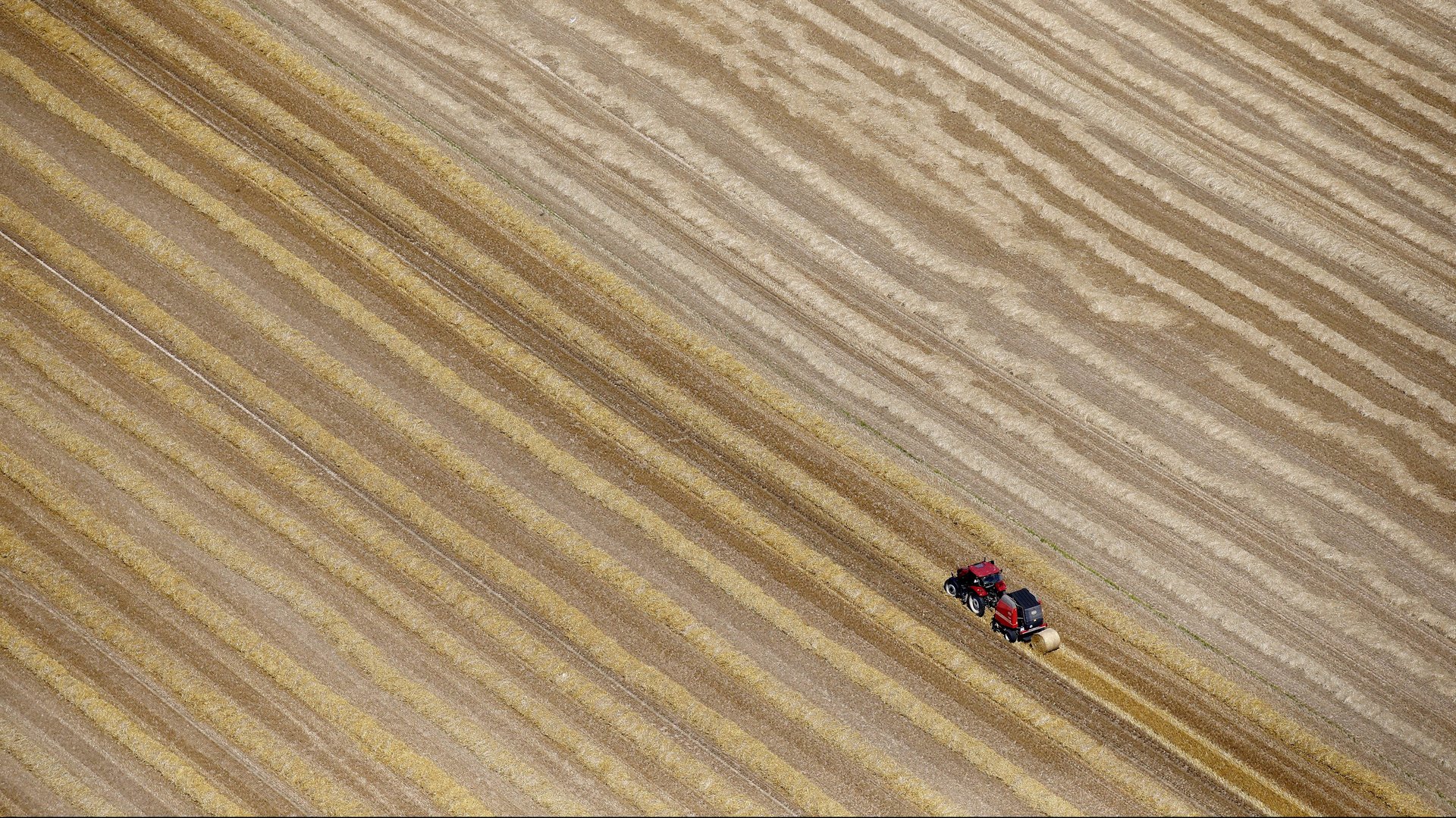How farmers can be part of the climate solution
For the first time ever, the UN is building out a roadmap for curbing carbon pollution from agriculture. To take part in that process, a coalition of US farmers traveled to the UN climate conference in Madrid, Spain this month to make the case for the role that large-scale farming operations, long criticized for their outsized emissions, can play in addressing climate change.


For the first time ever, the UN is building out a roadmap for curbing carbon pollution from agriculture. To take part in that process, a coalition of US farmers traveled to the UN climate conference in Madrid, Spain this month to make the case for the role that large-scale farming operations, long criticized for their outsized emissions, can play in addressing climate change.
Often, conversations about agriculture feature calls for more small-scale, organic farming, the abolition of animal agriculture, and a shift away from farming row crops like corn and soy. The farmers at the meeting in Madrid, many of them political conservatives, aimed to challenge this view.
A.G. Kawamura, a third-generation fruit and vegetable grower and California’s former secretary of food and agriculture, responds to critics by asking, “Well, did you eat today?”
The debate about the environmental impact of agriculture harkens back to the 1950s, which gave rise to synthetic pesticides and fertilizer, genetically modified crops, and advanced machinery. These tools allowed farmers to produce more food than ever before, but they also did considerable damage.
The widespread use of pesticides and fertilizers killed insects and birds, as well as fish who lived downstream of farms. The focus on cash crops led many farmers to plant the same crop year after year, sapping the soil of needed nutrients. And the embrace of high-powered farming tools turned once-rich topsoil into lifeless dust.
In light of these facts, many in the environmental community have called for a radical overhaul of the agricultural system. Longtime farmers of row crops like corn and soy are pushing back. They say that, through smart farming practices, they can actually help curb pollution.
Many farmers, for instance, are using advanced technologies that help them to cut down on pollution by allowing them to apply chemicals only where they’re needed. But these technologies are only cost-effective on larger farms.
Growers said they can mitigate the impact of large-scale farming by embracing practices such as no-till farming, which uses machines that don’t tear up the earth, and so doesn’t release the carbon stored in the soil. They have also called for planting cover crops—like oats, radishes, and cereal rye—in between rows of corn or hay to cover any bare earth, keeping carbon trapped in the ground.
In addition to stemming pollution, these practices also help the soil hold more moisture, meaning it can absorb extra water during a heavy rainstorm, keeping farms healthy. In an industry increasingly threatened by extreme weather, this is good business, said Fred Yoder, an Ohio farmer and former head of the National Corn Growers Association. He said he thinks of his soil as a 401k, a long-term investment that will help him weather future difficulties.
Yoder and other growers want the UN to encourage member countries to incentivize climate-friendly farming practices. Cover crops, for example, are currently used on just 4% of Iowa farmland. Widespread adoption of cover crops could be key to curbing farming-related emissions.
Critics, however, say that even with smarter practices, large-scale farms will continue to be a significant source of pollution.
“Farming is more than just a collection of practices. It is a system within the local ecology,” said Ben Lilliston of the Institute for Agriculture and Trade Policy. He said that carbon-smart farming can help curb pollution, but he believes that, ultimately, growers need to build farms that are more integrated with nature.
Many growers in Madrid, however, contended that large-scale farms could operate in harmony with nature, and they were eager to defend their environmental bona fides.
“The American farmer is the original environmentalist,” said Ray Gaesser in a panel on agriculture and climate change. Gaesser has been farming soybeans in Iowa for 50 years and previously chaired the American Soybean Association. “Yes, I happen to be conservative,” he added, “but that doesn’t mean I am not seeing the impacts of our changing planet first hand.”
Gaesser recalled a time 20 years ago when he watched, astonished, as four inches of rain fell on his farm in less than an hour. The deluge washed away much of his topsoil. Since then, he’s seen such rainstorms like that one strike at least once a year.
Another way that farmers can combat climate change, panelists said, is by embracing renewable energy. In corn-rich Iowa, for instance, the landscape is dotted with wind turbines and barns with solar panels on their roofs. The revenue from clean energy on farmland helps insulate growers against increasingly volatile commodity prices as well as the severe weather that could stunt yields.
“Farmers are used to working with big equipment, and they don’t tolerate equipment that doesn’t work, and just like everyone else, they love making money. Solar works, and it makes them money,” Tim Dwight, President of the Iowa Solar Energy Trade Association, said on the panel. “What’s not to love?”
Dwight said that wind and solar have grown in Iowa with the support of the agricultural community, which looms large in the Hawkeye State. His colleagues underscored this point in their argument at the climate talks.
“Farmers have a tremendous opportunity to be part of the climate solution,” said Ernie Shea, president of Solutions from the Land, a non-profit advocating for better farming practices to address climate change. “That’s why so many of us are here.”
This post originally appeared on Nexus Media.